City fills in underground vaults of downtown buildings. Why is that?
This is part of an ongoing series answering "Why is that?" questions about Salem and the Mid-Valley.
The question: Why is the city of Salem filling in some of the underground sidewalk vaults downtown? We have the answer. But first, there is a whole lot of history to dig into.
The background: A seven-block area bounded by Chemeketa, High, Ferry and Front streets makes up the Salem Downtown Historic District.
The district includes 57 buildings as contributing resources, including about two dozen built in the late 1800s and another two dozen in the early 1900s. Many have basement vaults extending under the adjacent sidewalks, not to be confused with tunnels.
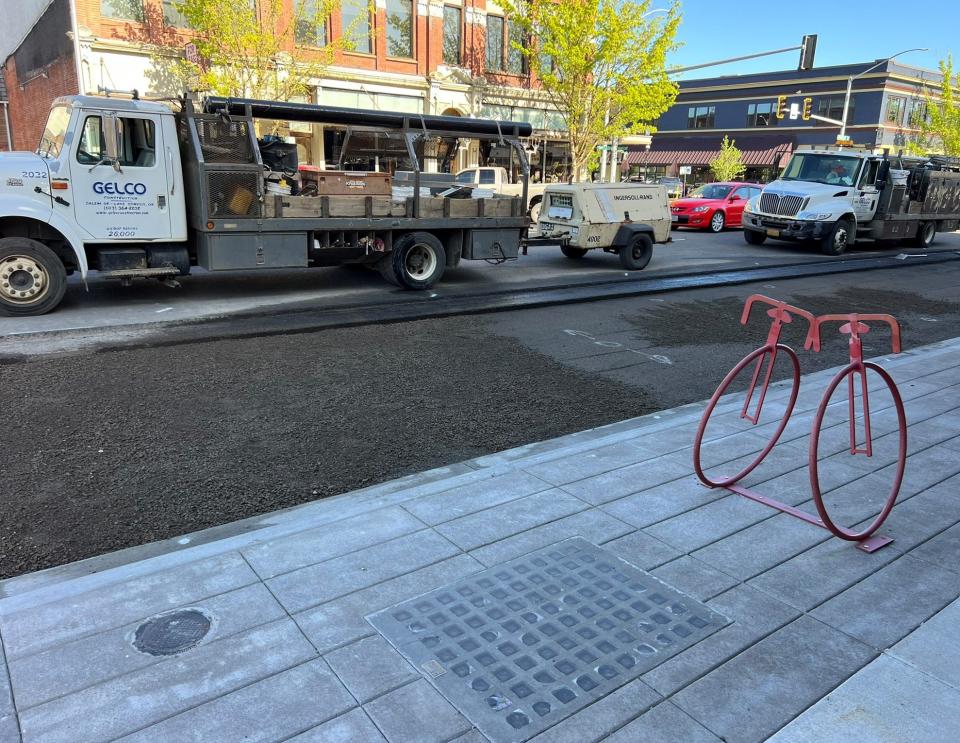
Salem has its share of tunnel lore.
Nearly two miles of tunnels beneath the Oregon State Hospital once were used to transport patients and supplies between buildings and under Center Street NE when the campus stretched across both sides.
But tunnels downtown?
Local officials refute the claims, saying the state hospital tunnel system often has been conflated with downtown.
The downtown tunnel myths were perpetuated more than a decade ago by some well-intentioned individuals who organized underground tours to drum up tourism. YouTube videos show guides accompanying visitors into building basements and showing them vaults, not tunnels.
Other organizations, social media sites, and even mainstream media outlets — including the Statesman Journal with coverage of the underground tours — fueled speculation and public imagination.
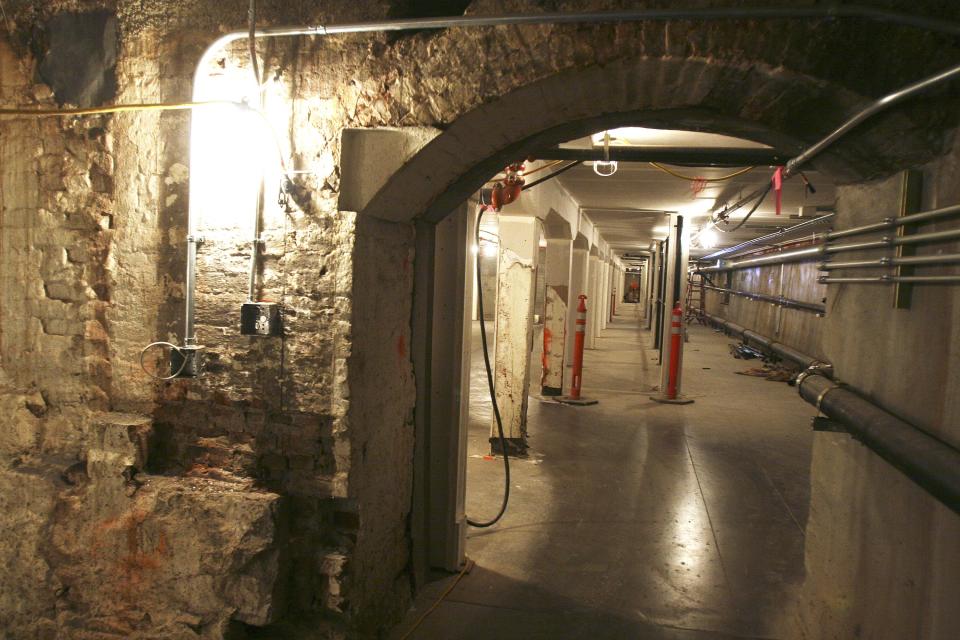
The sidewalk vaults in downtown Salem were installed around the turn of the century and used primarily for deliveries — some for coal — through steel hatches still found in some blocks. Grids of purplish glass blocks were embedded in the sidewalks to help illuminate the vaults.
Recent sidewalk and streetscape work has stoked another round of tunnel tales. A post on one Facebook group page referred to “the Chinese tunnels under Salem” and how “sadly the city is filling these in and burying them.”
First, there is no documentation of individuals of Chinese heritage living or working in tunnels in Salem. Willamette Heritage Center reports systematic scholarship, archaeology and oral history have poked holes in these myths.
But yes, the city has been filling in some vaults during ongoing streetscape improvements because many are more than a century old and no longer used as intended.
Most importantly, it is happening for safety reasons.
Why is the city filling in some of the underground vaults?
Most downtown visitors have no idea they could be walking on the roof of an underground vault whose structural integrity may be impacted by time and elements.
Some vaults have not been maintained or inspected, and deterioration may not be evident. They could be hidden hazards, like in other cities.
A woman in 2017 was injured falling through a sidewalk and into an abandoned vault in Manhattan, New York. In 2020, a man was injured at a Bronx bus stop when the same thing happened to him. Last November, a maintenance worker in Duluth, Minnesota, was injured when his boom lift tipped through the sidewalk and into a vault.
Salem officials worried more than 20 years ago it could happen here.
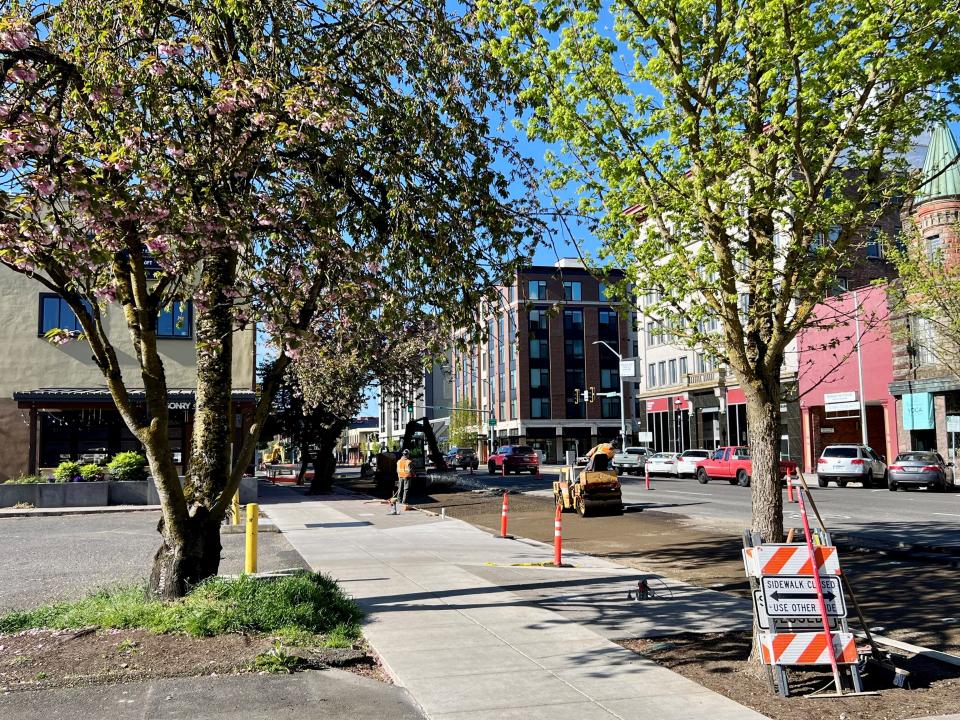
In 2003, a vault was revealed under the Grand Theatre by workers who tore down a section of moldy drywall in the basement. The vault appeared to be in danger of collapsing, with the owner discovering missing sidewalk supports and rusty rebar in the concrete. City workers moved the next day to shore up the space using timbers.
Two years later, vaults were filled at the Grand and the Reed Opera House before the city did sidewalk repairs. After tearing out the old sidewalks, mason walls were added to the basements along property lines, concrete slurry was poured into the vaults, and new sidewalks were built on top.
At that time, city officials wanted to launch vault safety inspections, but there were challenges.
No one knew exactly how many or where they were. They had rough knowledge of about 50 downtown sidewalk vaults but assumed there were more.
Access was — and still is — a challenge. The vaults are in the right-of-way, under city-owned sidewalks, but accessible only through the private property of building owners.
Fast forward to today, and a contractor for the city just completed work in a two-block area on the east side of Commercial Street, replacing sidewalks and filling vaults.
Two vaults were under the building that includes the Bike Peddler, which used the dark and sometimes damp space for cardboard storage. Construction workers on-site said they saw settling and cracks in the vaults before tearing out the sidewalk.
In their opinion, it was a matter of when — not if — the sidewalk would eventually collapse.
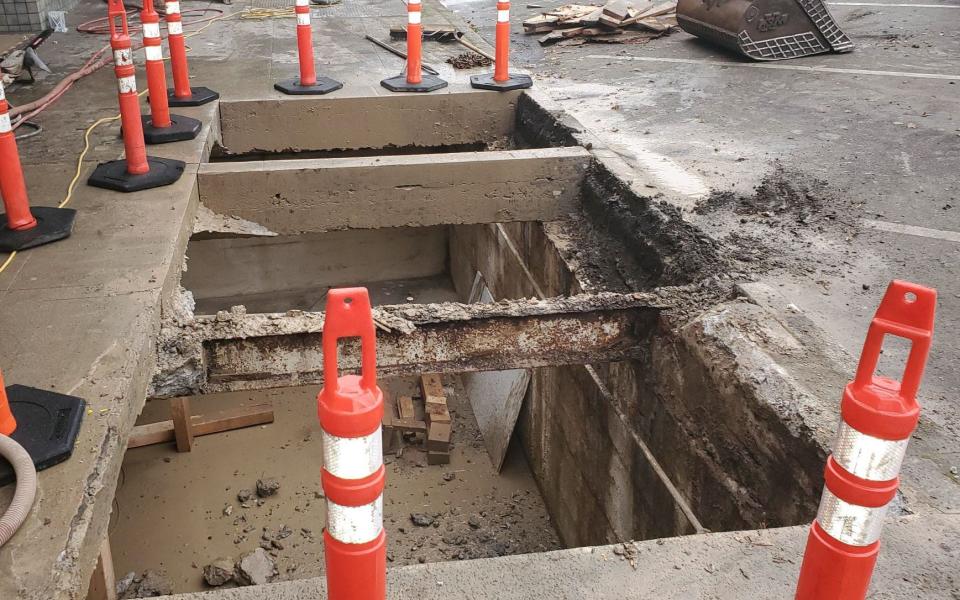
The crew used controlled density to fill the vaults, a type of concrete that flows into excavated cavities and fills all voids, then added three feet of rock on top before building the new sidewalk.
The same construction company also filled the vaults in the basement of US Bank on the corner of Commercial and State streets. That is the old Ladd & Bush Bank building, built in 1868 and one of the oldest downtown.
The city says it has had six vaults filled in the past four years and still is unsure how many there are. Although it has a downtown map marked with filled and unfilled vaults based on businesses self-reporting, records are spread across departments, including permitting, transportation and engineering.
The map shows 11 vaults have been filled, not including the most recent four.
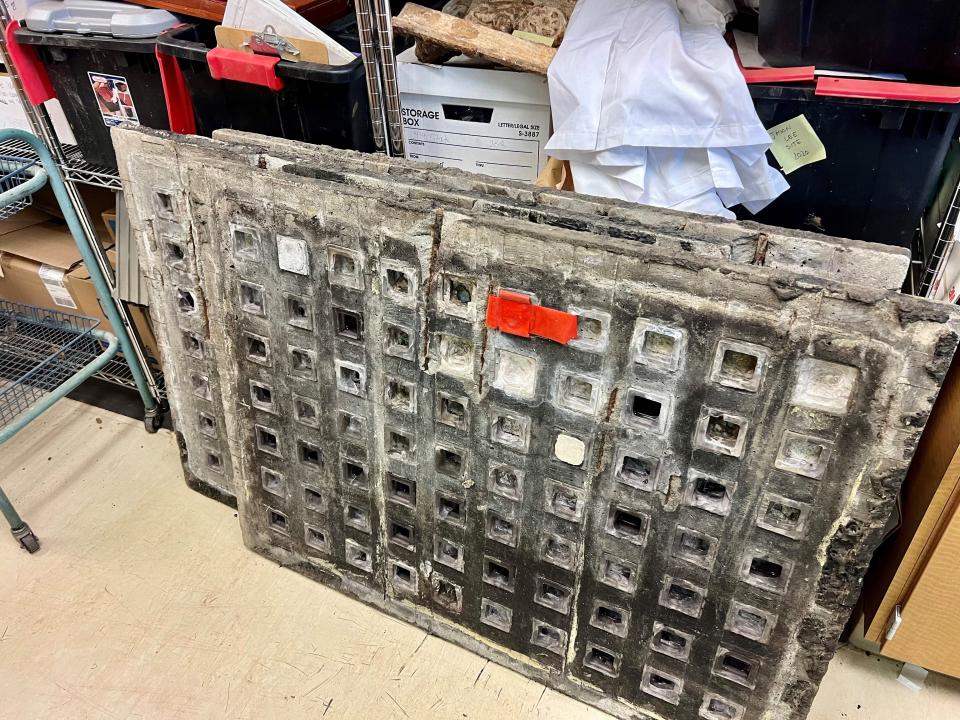
Oh, by the way
The city salvaged some of the purple glass grids. One is embedded in the new sidewalk outside the Bike Peddler. Three others are being preserved and stored in the city archaeology lab.
Speaking of downtown sidewalks and streets, how about some Salem trivia?
Salem poured its first concrete sidewalk in 1883 in front of a building on the southeast corner of Commercial and Chemeketa. First National Bank operated there for nearly 20 years.
The first paved street did not happen for another 24 years, a three-block section of Court Street in late 1907.
Help keep sidewalks and streets safe
Staff with public works conduct regular visual inspections of downtown pavement and sidewalk conditions to ensure timely identification of any deterioration or damage.
They notify engineering staff of issues, initiating an investigation to determine potential causes and identify necessary repairs as needed.
Inspections may also be initiated in preparation for construction projects planned in the area or at the request of property owners seeking a permit to make improvements.
The city encourages public participation in maintaining the downtown street network, asking residents to report concerns to the Public Works Dispatch Center at 503-588-6311 or service@cityofsalem.net.
Capi Lynn is a senior reporter for the Statesman Journal. Email your "Why is that" questions to her at clynn@statesmanjournal.com.
This article originally appeared on Salem Statesman Journal: Why is city of Salem filling in underground vaults downtown?

